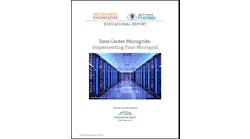January 30, 2013
It’s easy for those of us who ‘talk’ energy every day to forget that we operate in a bubble. Outside the bubble the average household is at best vaguely aware of the enormous technology revolution about to change the way each of us uses electricity.
Two recent studies provide some insight into how little of our bubble talk the consumer deciphers.
More than half of the consumers surveyed (54%) by Smart Grid Consumer Collaborative (SGCC) have never heard the term ‘smart grid.’ (And to be fair, the precise meaning sometimes eludes energy insiders too, although they use the catch phrase widely. For households, smart grid generally refers to digital gadgets and technologies that give the consumer increased ability to manage energy more efficiently, such as energy displays and programmable thermostats.)
Women and African Americans are among those who show little awareness of the term, along with those who are not college-educated or earn under $50,000 annually, according to SGCC’s 2013 “State of the Consumer Report.”
“Billions of dollars are being invested in new technologies that are little understood by the people who are supposed to benefit and who are paying the bills,” said the SGCC report.
The good news is that people like the concept once they learn about it. Among those familiar with the term, only 13 percent perceive it in negative way, according to the SGCC survey.
This lends credence to the notion that education will boost energy efficiency efforts.
Meanwhile, Comverge found that two-thirds (62 percent) of those it surveyed spend less than 10 minutes per month reviewing their energy usage or bill. To put this in perspective, the average American spends 100 times longer each day on Facebook, said the Georgia-based demand-side management company.
Both SGCC and Comverge offer some specific advice on how the industry can make efficiency as alluring as Facebook – or at least more alluring than it is now.
SGCC has been at work for some time defining who we are as energy consumers. The organization has segmented the American consumer based on our attitudes, values, behaviors, motivations, lifestyles, technology know-how and other characteristics. SGCC then helps utilities tailor their marketing to each segment. Some groups respond to messages about saving money and energy, others environmental concern and global warming.
“The key to engaging consumers in smart grid is understanding how to appeal to them in terms that will resonate – how to answer their objections and make it easy for them to interact with new technology,” said Patty Durand, SGCC executive director.
For example, those who SGCC calls “Do-it-yourself and save” types are likely to show interest in programmable thermostats that require some planning on their part. And “Easy Streets,” wealthy individuals reluctant to change their behavior, might respond to marketing materials pitching automated thermostats of the “set and forget” variety.
In its research, Comverge found that Americans increasingly want a single location to manage their energy, especially those who are under 40 years old.
“As a society, we are very digitally savvy and much more conscious of how energy use impacts the environment. Couple these changes with an overall desire for simplification, and it should be no surprise that people want all of their energy information in one place, available on any device and easy to understand,” said Blake Young, Comverge president and CEO.
To that end, Comverge recently introduced a new one-stop ‘residential customer engagement solution’, which it describes as a software and services product that helps utilities reduce energy use by making householders more energy aware.
Others, too, are pushing the idea of centralizing home energy management. Virginia-based Opower and technology giant Honeywell rolled out an energy management platform this week that combines Wi-Fi thermostats and Akuacom utility management software with Opower’s interactive, cloud-based application. Homeowners are able to view and adjust energy use from anywhere using a smartphone or computer.
It’s crucial that the energy industry find the friendly talk and technology that captures consumer attention – because the innovators, investors and policymakers are creating an ever-expanding universe of energy management products, a sizable portion for the household. Utility spending on energy efficiency will double by 2025 to about $9.5 billion per year, according to a recent study by the Lawrence Berkeley National Laboratory. That means substantial energy savings – and a lot of new ideas and technology for the consumer to master.
Elisa Wood is a long-time energy writer whose free newsletter, Energy Efficiency Markets, is available at www.RealEnergyWriters.com







